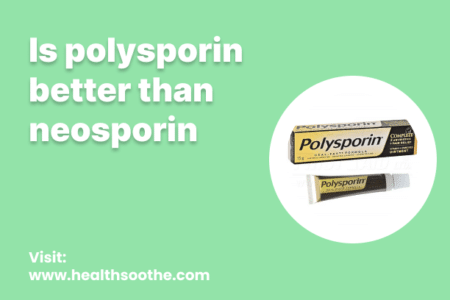A treatment called paracentesis is used to drain ascitic fluid or to take a tiny sample of it for diagnostic or therapeutic reasons.
This activity highlights the importance of the interprofessional team in the management of patients with ascites and describes the indications, contraindications, and complications of paracentesis.
A treatment called paracentesis is used to drain ascitic fluid or to take a tiny sample of it for diagnostic or therapeutic reasons.
To get ascitic fluid for testing or treatment, a needle or catheter is introduced into the peritoneal cavity.
By using a percutaneous needle aspiration, peritoneal fluid (also known as ascites or ascitic fluid) is removed from the abdomen during a paracentesis.
Typically performed on patients with chronic tight ascites, paracentesis may be used for diagnosis, analysis of ascitic fluid (from which modest volumes are extracted), or therapy (in which case large quantities are removed).
The fluid may be examined for malignancy or infection as well as the cause of the ascites.
The lateral decubitus or supine positions are used for paracentesis. A needle is inserted either in the middle of the lateral lower quadrant after the ascites fluid level has been rumbled.
- This positioning avoids puncture of the inferior epigastric arteries
- Avoid visible superficial veins and surgical scars
To lessen the possibility of an ascites fluid leak, the needle is placed at a 45-degree angle or using a z-tracking approach.
It is customary to do a paracentesis to relieve symptoms, particularly in cases with tight ascites. Specialists should assess patients who often require paracentesis and consider a transjugular intrahepatic portosystemic shunt.
Since there is a chance of introducing an infection into the peritoneal cavity, paracentesis is carried out in an aseptic environment. Limiting catheter drainage duration to less than 6-8 hours may help lower the risk of infection (some authorities suggest four hours).
If sterile measures are followed to avoid the need for hospital admission, paracentesis may be carried out either in an ambulatory environment or in a hospice.
How Paracentesis should be performed:
Patients with known ascites who arrive with alarming symptoms such as abdominal pain, fever, gastrointestinal bleeding, deteriorating encephalopathy, new or worsening renal or liver failure, hypotension, or other indications of infection or sepsis, rule out spontaneous bacterial peritonitis.
Determine the cause of newly developing ascites.
Reduce tense ascites or ascites that are resistant to diuretics in hemodynamically stable individuals with abdominal pain or respiratory distress (large-volume therapeutic paracentesis)
Equipment for paracentesis
There are preassembled paracentesis kits with plastic sheath cannulas connected to syringes and stopcocks.
In addition, 18 gauge to 20 gauge standard or spinal needles or conventional large-bore intravenous (IV) catheters may be utilised.
These may be connected to an IV tube for fluid drainage after being first aspirated with a syringe. If you don’t already have a kit, you will need the following items:
- sterile gloves
- sterile drapes/towels
- chlorhexidine or betadine
- 1% lidocaine, a needle to inject anaesthetic (25 gauge for the skin and a slightly smaller gauge needle for the soft tissue)
- a 14 or 16-gauge needle or IV catheter for fluid aspiration (spinal needle for obese patients)
- a 20 cc or 60 cc syringe to collect a sample of fluid
- IV tubing
- vacuum bottles or plastic canisters (if performing large-volume paracentesis)
- 4×4 gauze or bandage
- haematology, chemistry and microbiology sample tubes and blood culture bottles
How to Prepare for paracentesis
The lower quadrant of the abdomen, lateral to the rectus sheath, is the best location for the surgery.
In patients with lower fluid volumes, positioning the patient in the lateral decubitus position can help identify fluid pockets. Request that the patient empties their bladder before beginning the procedure.
Ultrasound at the bedside should be used to choose the best spot for the procedure.
In order to reduce the likelihood of unsuccessful aspiration and complications, ultrasound can confirm the presence of fluid and pinpoint an area with enough fluid for aspiration.
In some patients, ultrasound lessens the need for an unnecessary invasive procedure and improves the success rate of paracentesis.
You can either advance the needle under direct ultrasound guidance after marking the site of insertion or you can do it immediately.
What is the best position for paracentesis?
To further reduce the danger of perforation during paracentesis, the patient is positioned supine and gently turned to one side. The left-lateral technique is most often utilised since the cecum is relatively fixed on the right side.
Make the patient sit in bed with their head 45 to 90 degrees higher. Roll the patient slightly onto his or her left side if you want to implant the needle in the left lower quadrant to enable the fluid to collect there.
Place the patient in a lateral decubitus posture as an alternative.
- Patients with significant ascites should be in a supine position with the head of the bed raised by 30 to 45 degrees.
- Position in the lateral decubitus position for patients with less fluid retention.
Note:
A surgical puncture of the peritoneal cavity is known as an abdominal paracentesis, which is used to aspirate ascites.
Ascites, an acute abdomen, and peritonitis are just a few of the many abdominal issues for which it is a safe and effective diagnostic and therapeutic procedure.
Physical examination may reveal ascites, which are characterised by abdominal distention, varying dullness, and occasionally a palpable fluid wave.
This procedure outlines how a nurse practitioner should aspirate ascites.
Paracentesis complications
Although paracentesis is a safe treatment, there is a very small possibility that the needle may pierce the intestines, bladder, or an abdominal blood artery. There is a minor chance of renal failure and reduced blood pressure if a big amount of fluid is evacuated. Infection is also a remote possibility.
In a prospective analysis of 171 patients having paracentesis, it was discovered that “severe” problems, which included five bouts of haemorrhage and three infections that resulted in death in two instances, occurred in 1.6% of operations.
Patients with low platelet counts, those in Child-Pugh stage C, and those with alcoholic cirrhosis 8 were more likely to have major problems from therapeutic operations than from diagnostic ones.
- Persistent leakage of ascitic fluid at the needle insertion site. This can often be addressed with a single skin suture.
- Abdominal wall hematoma
- Wound infection
- Perforation of surrounding vessels or viscera (extremely rare)
- Hypotension after large volume fluid removal (more than 5 litres to 6 litres). Albumin is often administered after the removal of more than 5 L of fluid to prevent this complication.
- A failed attempt to collect peritoneal fluid
- Spontaneous hemoperitoneum – This rare complication is due to mesenteric variceal bleeding after the removal of a large amount of ascitic fluid (>4 L).
- Hollow viscus perforation (small or large bowel, stomach, bladder)
Catheter laceration and loss in the abdominal cavity - Laceration of a major blood vessel (aorta, mesenteric artery, iliac artery)
- Postparacentesis hypotension
- Dilutional hyponatremia
- Hepatorenal syndrome
Conclusion:
One skin suture may be sufficient to stop a leak in certain circumstances. An ostomy bag is placed over the puncture site to restrict the leak until it is finally sealed up.
A technique where substantial amounts are removed may have a delayed consequence called post-paracentesis hypotension, which can happen up to 12 hours later.
Although no difference in survival has been reported compared to other plasma expanders, patients may be prepped with a colloid solution, such as albumin, to reduce the occurrence of this problem.




